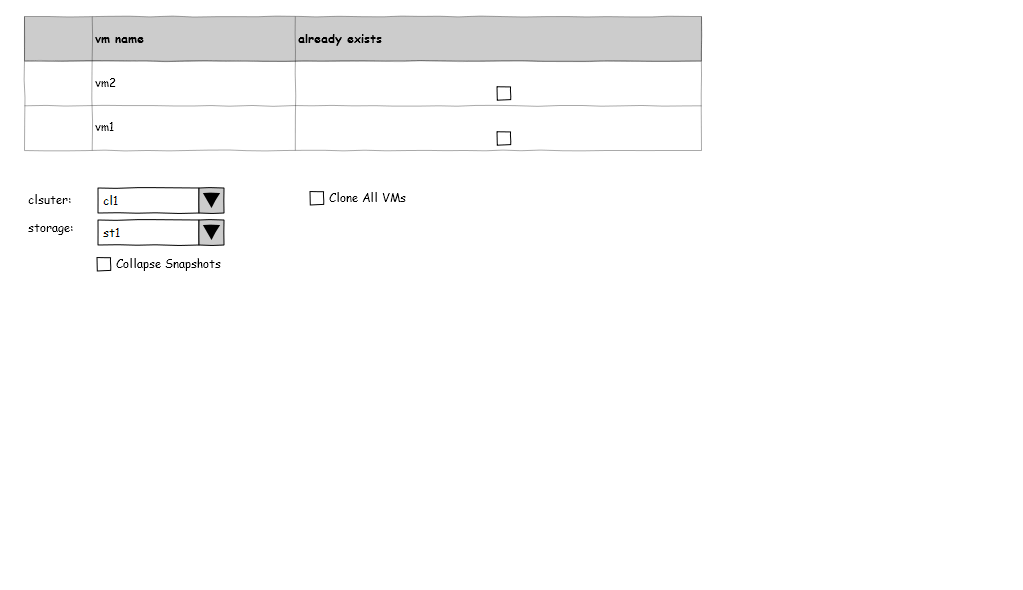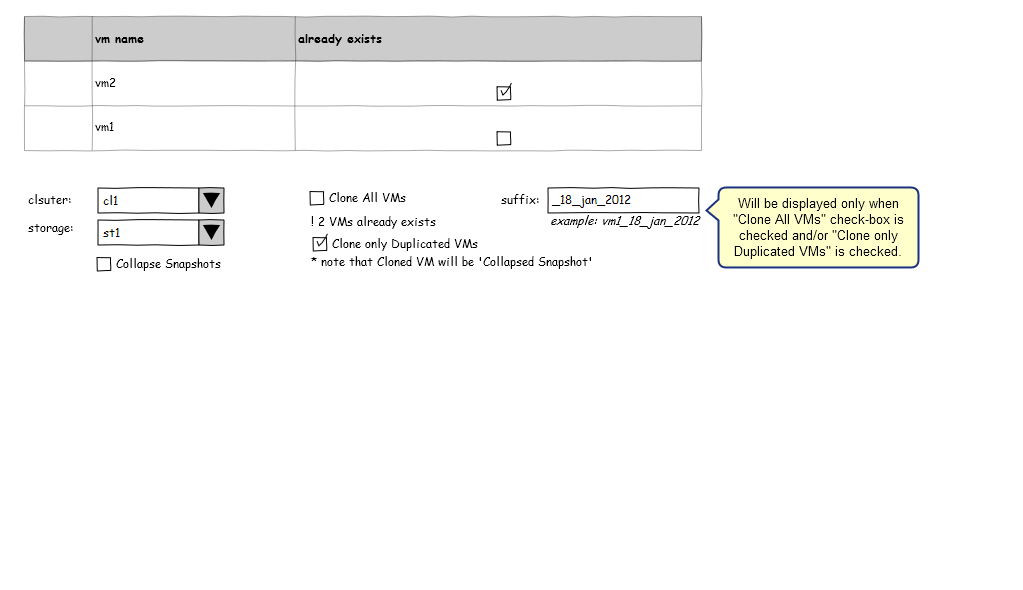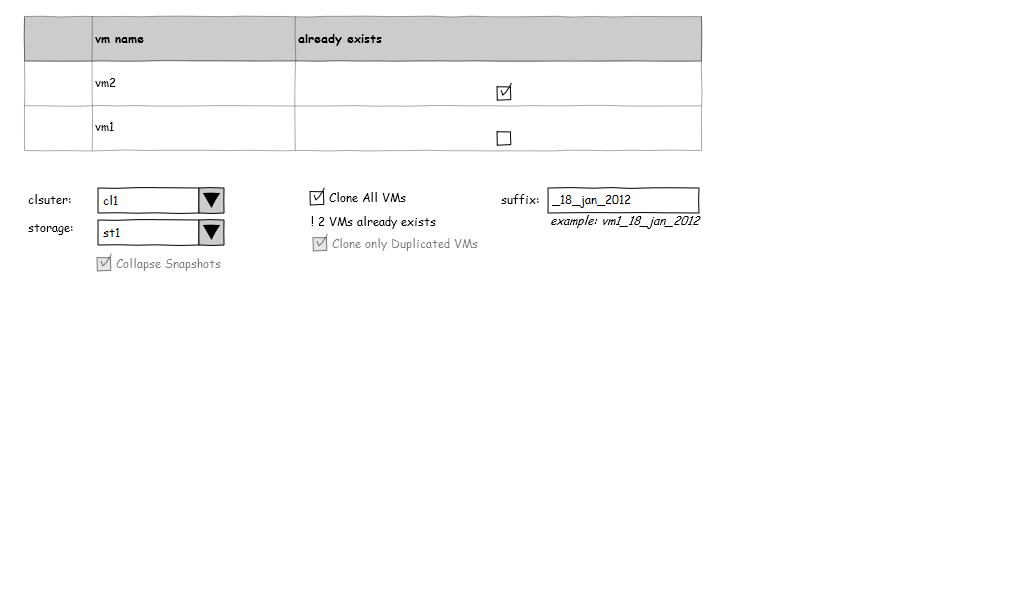Most of them are outdated, but provide historical design context.
They are not user documentation and should not be treated as such.
Documentation is available here.
Import VM or Template More than Once Feature
Owner
- Name: Gilad Chaplik (gchaplik)
Summary
Adding the functionality to import VMs and Templates that already exist in setup, in fact this feature consists of changing the identifiers of an imported VM/Template.
Current status
- Merged to upstream: vm & template- gui & backend.
- Development Stage: REST for both.
- Last updated date: Fri May 18 2012.
Affected oVirt projects:
- Core
- Webadmin
- API/CLI
Limitations
- Cannot import VM without collapsing its snapshots.
Design
note: unless specified ‘entity’ may refer both to VM and Template oVirt Entities.
webadmin
Only the ImportEntity dialog will be affected:
-
Add ‘Already Exists in Setup’ column to import entity dialog:
- Run one search query for all vms (by id) to check whether the imported entities exist in the setup (if search is not supported to id, I will implement it).
-
Add ‘clone all entities’ check box to Import Entity Dialog
-
In case checked:
-
(in import VM) The ‘collapse all snapshots’ checkbox should be checked and disabled.
-
A suffix textbox should be added (the suffix will be added to all VMs’ names).
-
-
-
Add ‘clone only existing entities’ check box to Import Entity Dialog:
-
In case checked:
-
(in import VM) A label will be shown to user that indicates that the cloned VMs’ snapshots will be collapsed.
-
A suffix textbox should be added (the suffix will be added to all VMs names).
-
-
If ‘clone all entities’ is checked, ‘clone only existing entities’ will be checked and disabled.
-
-
Needs high level (user level) summary. For example, what does it mean that a VM already exist in the setup? If I had a VM with 10GB
disk, without an OS installed, then exported it, then installed an OS into it now the disk is a bit full, as opposed to the emptied exported one). Does it means that an identical entity already exist in the setup or not? (think of overwriting files).
- the suffix text box will be shown only when one of the above check-boxes is checked (it is relevant only for importing an entity as clone).
mockups
note: the following mockups are of ImportVM, in ImportTemplate the ‘Collapse Snapshot’ check box is hidden, and also any label that is relevant to it.
- in case no entity exists in the system, this is the default view of the dialog:

- in case one of the entities already exists- the duplicate check box will be shown. its default is ‘true’:

- when selecting ‘clone all’ the duplicate check box (if shown) will be check and disabled:

Engine
- Add to ImportEntityParameter parameter class boolean member, named importAsNewEntity, that indicates whether this entity should be cloned, the default value is false.
-
Alter ImportEntityCommand in case importAsNewEntity parameter field is set to true:
-
Set the VM with a new identifier (the new name already placed in the vm - concat of vm and suffix, see webadmin).
-
Set the disks target with a new identifier.
-
For all VM’s NICs, allocate new MAC addresses.
-
(in import VM) Collape all snapshots must be ‘true’.
-
- detailed design will be added in the near future.
CLI/API
Adding ‘importAsNewEntity’ parameter (not madnatory) and then getting it from Action.java in BackendStorageDomainVmResource–>doImport(), then setting in ImportVmParameters and before sending to Backend (if it’s null, this means false).
For import VM:
http://localhost:8080/api/storagedomains/your_storage_domain_id/vms/your_vm_id/import
<action>
<cluster id="afsdasdf"/>
<storage_domain id="111111111"/>
<importAsNewEntity>true`/importAsNewEntity> //This is the new value
<vm>
<name>new_name</name>
</vm>
</action>
Same for template in: BackendStorageDomainTemplateResource
And finally, add in RSDL (rsdl_metadata_v-3.1.yaml): optionalArguments: {action.importAsNewEntity: ‘xs:boolean’} (for both VM and Template import command)
- SDK and CLI should be automatically updated, as they are auto-generated from REST-API.